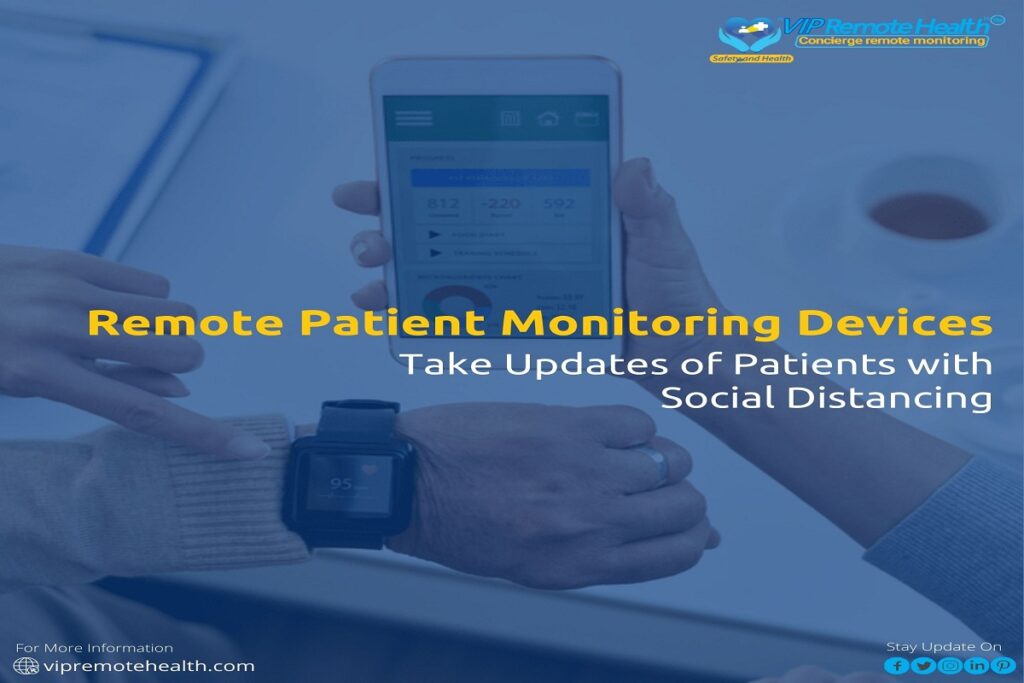Anybody making a living in the healthcare field will have heard of a remote patient monitoring system, which has skyrocketed in popularity as the delivery method of choice for healthcare worldwide. Remote Patient Monitoring, often shortened down to RPM, leverages new advancements in technology to enable healthcare professionals to gather patient data outside of traditional in-clinic settings.
Think of the Remote Patient Monitoring system as the use of technology to monitor, capture and record different types of patient data using at-home remote patient monitoring devices and electronically relay this data to the healthcare provider for assessment.
The healthcare clinic reviews the data relayed by the patient (or automatically forwarded by devices in some cases) and provides recommendations based on it.
Steps Involved in Remote Patient Monitoring System
As fun as long paragraphs and big words are to read, there’s nothing quite like an example to understand a concept, right? We want to make sure you’re following us, so below, we’ve arranged a review of the basic steps involved in the remote patient monitoring system:
- A healthcare provider identifies suitable conditions and launches an RPM program to treat patients who need semi-regular health checkups. The healthcare provider can use this service to collect a wide variety of patient data like blood sugar, blood pressure, and several other vital signs to prevent the patient from heading into the clinic.
- Next, the healthcare provider determines that a particular patient would benefit from remote monitoring of their vital signs. After getting the patient’s written consent, they sign up for the RPM program.
- The patient is provided with several devices to collect the health data required for the program. In most cases, a qualified professional visits the patient’s house to set up the equipment and educate the patient in using them. In extreme instances where social distancing has to be observed, the patient is remotely provided with the equipment, with instructions coming through a video call or similar medium.
- Once the Remote patient monitoring devices (usually blood pressure monitors, weight scales, etc.) have been appropriately set up, health data is captured by the devices and transmitted electronically from the patient to the healthcare provider. The frequency of the transmission can vary from case to case and depends on the patient.
- The doctor (or other healthcare providers) reviews and analyzes this patient data to provide healthcare services to the patient, along with recommendations, guidance on what to do, and even prescriptions for medication.
The Role of Remote Patient Monitoring Devices in Social Distancing
Before we start with this, did you know that while RPM skyrocketed in popularity during the pandemic, it was already gaining traction with healthcare professionals around the world? Improving a patient’s access to quick, quality care and increasing their confidence in providing self-care have always been some of the most significant benefits of RPM and have only become even more critical with the wax and wane of the pandemic.
Here are some points that outline the role of RPM procedures in Social Distancing:
Reducing Exposure Through RPM
People often forget that while they’re responsible for providing healthcare to the rest of us, healthcare professionals are just as susceptible to being infected with the COVID-19 virus.
This is where we see one of the most significant roles RPM played in a society adapting to Social Distancing: it reduced exposure by limiting physical contact between healthcare professionals and patients while still giving them the means to monitor patients’ vital signs.
Encouraging At-Home Care
Hospitals might seem like safe havens at first glance, but in reality, the likelihood of contracting infections during the pandemic only increased the longer a patient remained in the hospital. On top of that, the old-fashioned spot-checking methods used by many healthcare professionals worldwide often left patients unchecked for extensive periods, leading to inconsistent monitoring of their vital signs.
Remote Patient Monitoring prevents this through the remote patient monitoring devices that record patients’ vital signs at frequent intervals, ensuring results are consistent.
The Emergence of Remote Patient Monitoring: Final Words
Today, our society has been made to watch as the pandemic has changed every aspect of our daily lives. Social distancing has quickly become the need of the hour. While social distancing has resulted in socio-economic changes, it’s also had surprisingly positive results in healthcare.
It forced healthcare providers to abandon outdated, inefficient healthcare delivery systems and instead focus on providing medical services from a distance, resulting in the rising popularity of remote patient monitoring devices. If you think an RPM healthcare plan would suit you better, you can Google the topic or ask your healthcare provider for details on their remote patient monitoring system!

